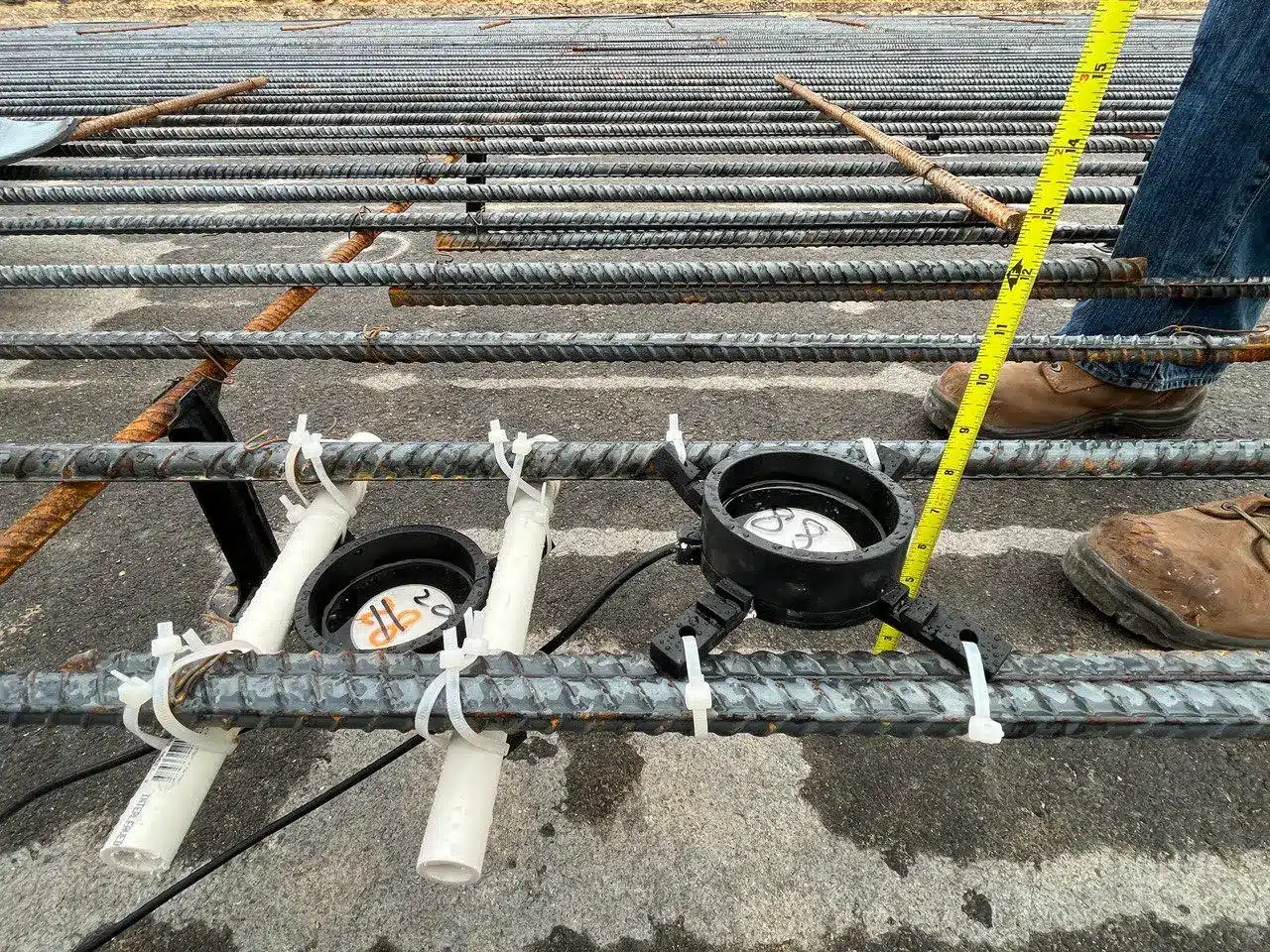Researchers at Purdue University have developed a device that allows concrete to communicate, reducing construction time and the need for frequent pavement maintenance.

Concrete’s unpredictable strength can result in premature failure and frequent repairs, hindering traffic flow. Infrastructure repairs waste 4 billion hours and 3 billion gallons of gas yearly due to inadequate knowledge of concrete strength, causing traffic jams.
Researchers at Purdue University have created a device enabling concrete to communicate, reducing construction time and the need for frequent pavement maintenance. This breakthrough improves road sustainability and significantly lowers carbon emissions. Embedded in concrete, the sensor gives engineers precise and consistent strength data, surpassing current tools and methods.
Replacing century-old industry standards to make roads last longer
Traditional methods involve lab or onsite testing of large concrete samples, but discrepancies between lab and outdoor conditions can lead to inaccurate strength estimates. With the developed technology, engineers can monitor fresh concrete directly, eliminating the need for samples and accurately measuring multiple properties simultaneously. The sensor sends real-time alerts to engineers via a smartphone app, indicating when the pavement can withstand heavy traffic. Stronger pavement reduces repair frequency, while instant strength updates ensure timely road openings. Construction workers easily install the sensors by placing them in the concrete formwork and connecting the cable to a handheld device for data logging. The app provides real-time updates on concrete strength for the desired duration.
Cutting carbon emissions by cutting down on traffic and cement
The technology can reduce carbon emissions by minimizing traffic delays caused by road repairs and construction. The researchers aim to reduce cement usage in concrete mixes to curb carbon emissions. Their solution utilizes artificial intelligence and data collected from highway sensors to optimize concrete mix designs. Construction codes mandate higher cement content in concrete mixes for desired strength, but excessive cement leads to premature pavement cracks. The team estimates over 1 billion tons of carbon emissions annually due to concrete mix overdesign, per data from the Global Cement and Concrete Association. Modern concrete mixes with finer powder require adjusted water-cement ratios. The codes also overlook the influence of weather on concrete mixes, as different states have varying requirements based on climate.
The researchers believe that utilizing artificial intelligence (AI) could lower cement usage in concrete mixes by 20% to 25%, enhancing pavement durability while reducing costs.








Beautiful article.
Thank you for your valuable feedback.